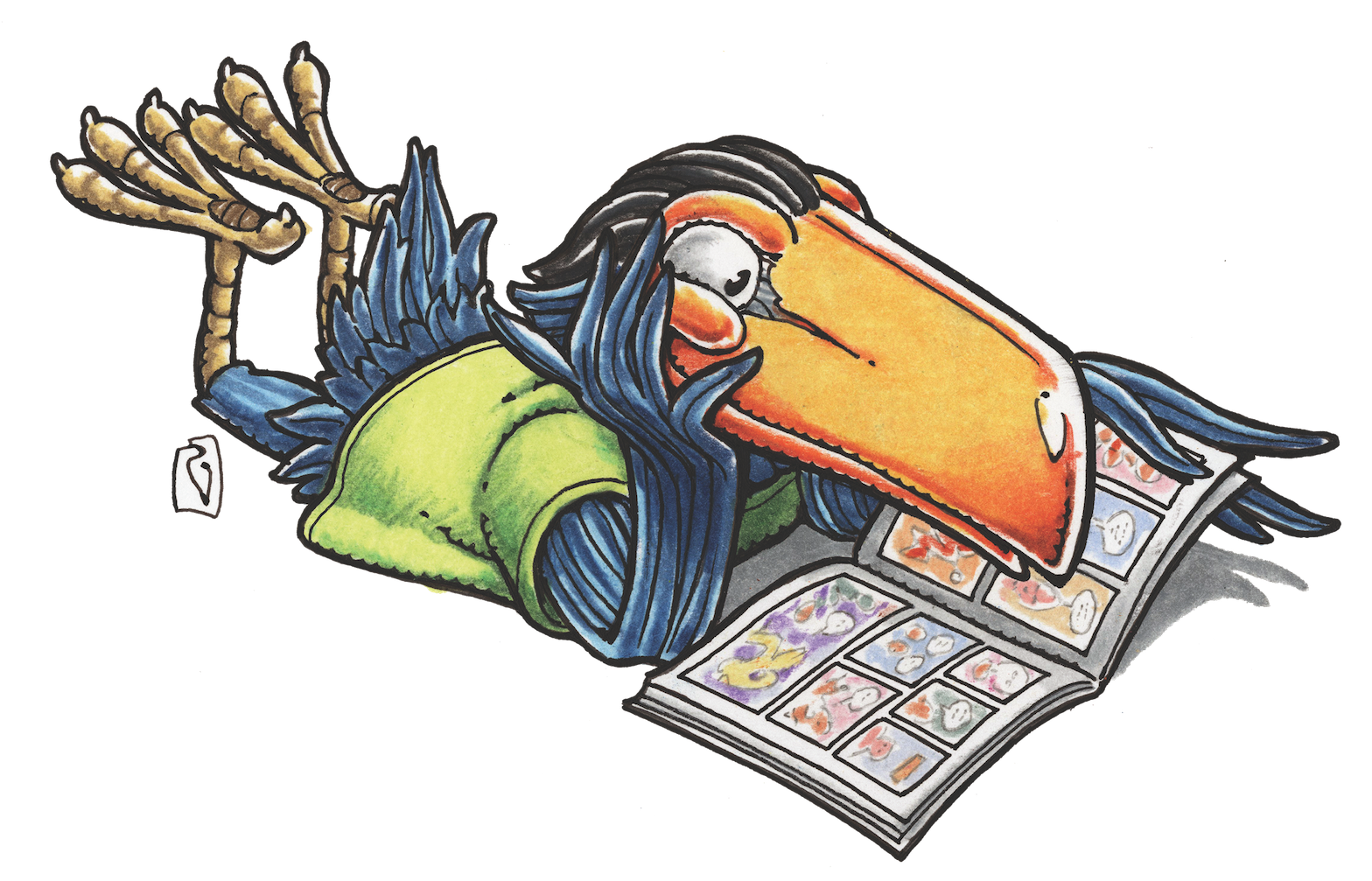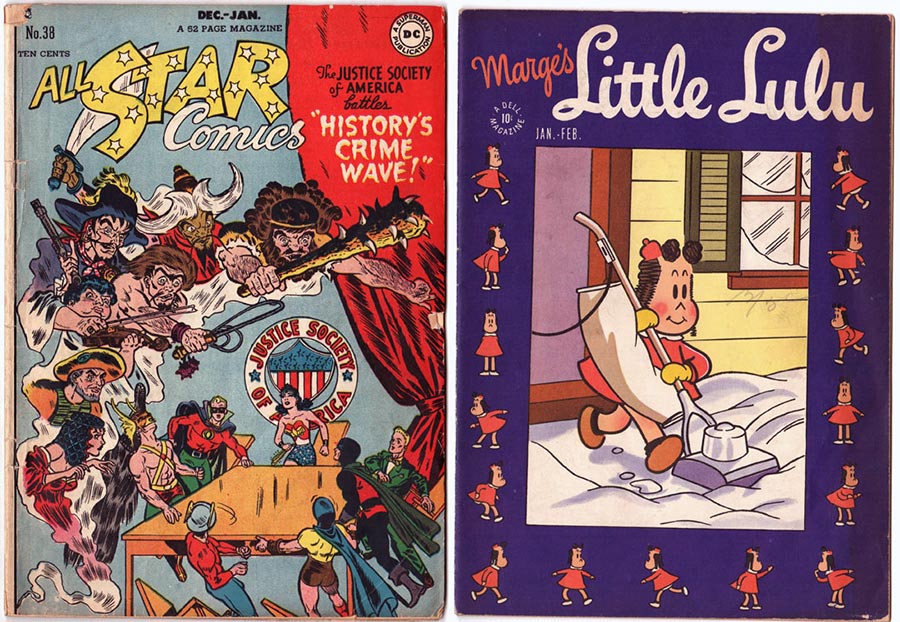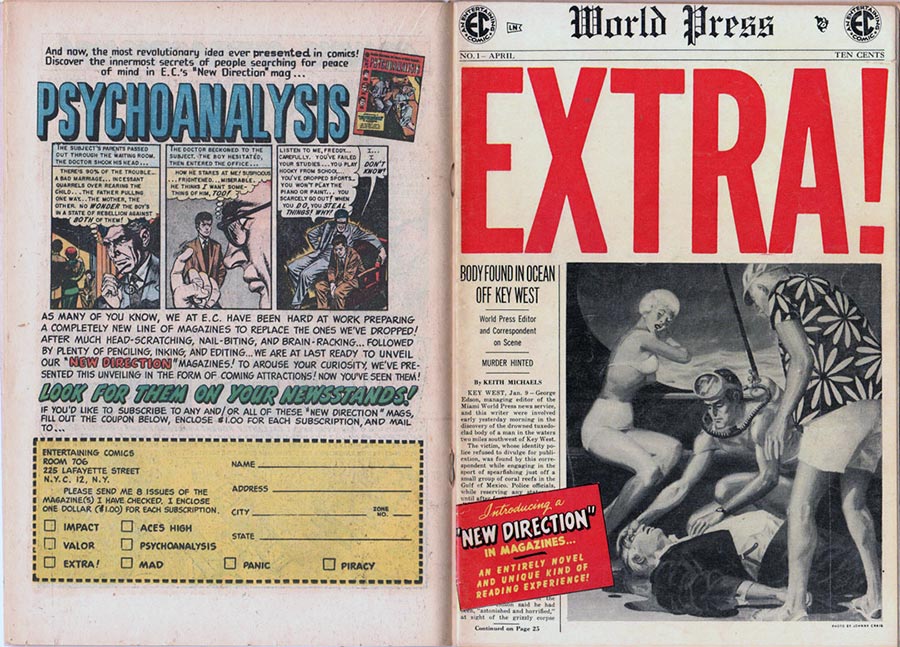MAGGIE’S WORLD BY MAGGIE THOMPSON
Maggie’s World 056: Shopping for Comics

Four decades ago, Phil Seuling and Jonni Levas announced incorporation of Sea Gate Distributors in The Buyer’s Guide. It was a formalization of the evolution of what would become the direct market.

An Origin Story
You young whippersnappers may not recall the comics-collecting challenges that preceded November 1977, so let’s take a trip in the WABAC machine. (Or maybe you don’t even remember “Peabody’s Improbable History”? Mr. Peabody and Sherman? But I digress.)
When I was looking for comic books on the newsstand in the 1940s and 1950s, I didn’t get to pick from all the comic books being released that month. I only saw what that specific newsstand put on display, and it didn’t occur to me that I might be missing what others took for granted.
There were many comic-book series, many comic-book publishers, and even a bunch of comic-book distributors back then. The racks for Gilberton’s Classics Illustrated titles were separate from the racks for Timely, DC, and Hillman comics. Dell was the name of the distribution company that also filled racks with paperbacks carrying the Dell logo.

Wups!
Come to think of it, I did eventually realize that there might be a problem. The year was 1955, and E.C. comics had been carrying announcements for its new titles. The ads for its “New Direction” line listed the ones to look for, and I was keeping my eye out. I found Aces High, Impact, M.D., Psychoanalysis, and Valor. But Extra! #1 never showed up at my local newsstand.
I was relieved to find Extra! #2 later—but it was years later (and long after the demise of the Extra! series) before I was able to add that first issue to my collection.
And comics collecting in the 1960s continued to be a challenge. As Don and I tried to keep up with new comics, we discovered that it required weekly visits to a variety of shops large and small. In 1962 came the added twist of newsstands that might carry Dell but not Gold Key series—or vice versa.
In the meantime, the publishers themselves were facing the problems inherent in not being able to tell how well titles were doing until they reimbursed sellers for what hadn’t sold. (After all, a newsstand could claim its payment back by returning the cover or a portion of the cover as evidence that a copy hadn’t sold. Later, “affidavit returns” meant a newsstand could simply report that copies hadn’t sold.)
Footnote: In 1966, editor Bill Harris told me that King Features had solved the problem: It would supply its King Comics line in packs that would ship from shop to shop; if they didn’t sell in one location, they would simply be forwarded to the next vendor—and so on, until someone bought them. I asked how he’d know if he had a product that no one wanted to buy. He indicated that he didn’t think it’d be a problem. (The problem was for us. We wanted to buy the titles but couldn’t find anyone selling them. Eventually, we did locate a seller: the gift shop of a local hospital.) King’s Flash Gordon #1 was September 1966; the last issue was #11, December 1967.
There were, in other words, challenges for both buyers and sellers.
Comics Specialty Shops
“Fair warning: For adult intellectuals only!” Zap Comix #1 came out in late 1967 and found distribution in shops catering to customers looking for … Well, many were adopting an alternative lifestyle, and a number of small publishers found those stores provided enough sales to justify producing new comic book titles. Collectors began to seek out “underground comix,” back-issue sellers began to provide them, and a new distribution system evolved.

Within a decade, entrepreneurs approached mainstream comic-book publishers with a deal: They’d pre-order comic books, agreeing not to demand a refund for unsold copies in return for a much higher discount than the newsstands (which received credit for unsold copies) got.
And the direct sales market was born.
A variety of such distributors soon entered the market.
Within a couple of decades after Phil Seuling and Jonni Levas announced the incorporation of their distribution company, nine separate comic-book distributors were members of the International Association for Direct Distribution. And there were a dozen or so comics publishers that focused distribution entirely within that direct comics shop market.
Heck, even the “major” publishers were producing material that shipped only to comics shops. Marvel’s Dazzler #1 was dated March 1981. DC’s Camelot 3000 #1 was dated December 1982. Their target was the serious comic book collector, the customer who savored the variety offered by the artform.
Evolution
Not that things were simple. One of the early complications came because newsstand comics eventually carried UPC codes—and that meant that those copies could be returned for credit. So there had to be a different print run for the covers of comics shop issues. (You may have noticed back-issue comics that carry only a design, rather than a bar code, in the UPC box.)
Eventually, though, the comics shops developed sales systems that meant even direct market copies needed UPC codes—but codes that had to be different from those on newsstand copies.
And what about the increasing number of variant editions? (Marvel’s Matt Ragone and Paul Curtis, for example, were given the job of developing bar codes for different versions of the same Marvel issue.)
In 1996, Diamond became the industry-serving distributor and began to offer such outreach as its Comic Shop Locator Service. In 2002, it began the annual Free Comic Book Day in which comics shops provide a variety of samples from around the industry.
What’s the point of this trip down the twisting memory lane?
It’s to remind us all (yes, including me) that we should appreciate and support our comics shops, realizing that they offer us what we could only dream of in the 1950s. It’s one-stop comics shopping in which comics shops (which, by the way, pay for those samples they hand out every May on Free Comic Book Day) are the focal point for comics readers.
You know what?
That’s not true.
I doubt any of us looking at comic books more than half a century ago could have dreamed of what comics shops offer us today.
Lucky us!
Maggie’s World by Maggie Thompson will return the first Tuesday in January 2018 here on Toucan.